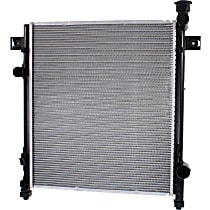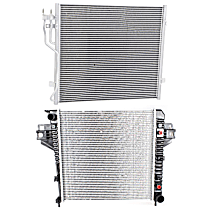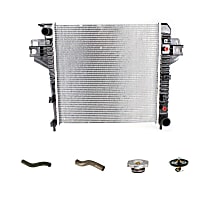{
"lazyNodes": false,
"abFitnotesFlag": false,
"abCrawlReviews": false,
"productOptionsCookie": false,
"orderDelayFlag": false,
"skipSessionCookie": false,
"covidMessage": false,
"fullTitleCookie": false,
"nrLoggerCookie": false,
"checkoutReviewCookie": false,
"productOptionSeqCookie": false,
"maintenanceFlag": false,
"bufferETACookie": false,
"multiShippingDiscountFlag": false,
"newFitmentFlag": false,
"surveyOptInFlag": false,
"crossSellFlag": false,
"skuMappingFlag": false,
"paySplitCookie": false,
"callDisableFlag": false,
"zipPaymentFlag": "u",
"hassleFreeReturn": false,
"lifetimeReplacement": false,
"cpn_off": false
}Jeep Liberty Radiators
Shop Catalog
![]() WARNING: This product can expose you to chemicals including Lead and lead compounds, which is known to the State of California to cause cancer and birth defects or other reproductive harm. For more information go to www.P65Warnings.ca.gov.
WARNING: This product can expose you to chemicals including Lead and lead compounds, which is known to the State of California to cause cancer and birth defects or other reproductive harm. For more information go to www.P65Warnings.ca.gov.
![]() WARNING: This product can expose you to chemicals including Lead and lead compounds, which is known to the State of California to cause cancer and birth defects or other reproductive harm. For more information go to www.P65Warnings.ca.gov.
WARNING: This product can expose you to chemicals including Lead and lead compounds, which is known to the State of California to cause cancer and birth defects or other reproductive harm. For more information go to www.P65Warnings.ca.gov.
![]() WARNING: This product can expose you to chemicals including Lead and lead compounds, which is known to the State of California to cause cancer and birth defects or other reproductive harm. For more information go to www.P65Warnings.ca.gov.
WARNING: This product can expose you to chemicals including Lead and lead compounds, which is known to the State of California to cause cancer and birth defects or other reproductive harm. For more information go to www.P65Warnings.ca.gov.
![]() WARNING: This product can expose you to chemicals including Lead and lead compounds, which is known to the State of California to cause cancer and birth defects or other reproductive harm. For more information go to www.P65Warnings.ca.gov.
WARNING: This product can expose you to chemicals including Lead and lead compounds, which is known to the State of California to cause cancer and birth defects or other reproductive harm. For more information go to www.P65Warnings.ca.gov.
![]() WARNING: This product can expose you to chemicals including Lead and lead compounds, which is known to the State of California to cause cancer and birth defects or other reproductive harm. For more information go to www.P65Warnings.ca.gov.
WARNING: This product can expose you to chemicals including Lead and lead compounds, which is known to the State of California to cause cancer and birth defects or other reproductive harm. For more information go to www.P65Warnings.ca.gov.
![]() WARNING: This product can expose you to chemicals including Lead and lead compounds, which is known to the State of California to cause cancer and birth defects or other reproductive harm. For more information go to www.P65Warnings.ca.gov.
WARNING: This product can expose you to chemicals including Lead and lead compounds, which is known to the State of California to cause cancer and birth defects or other reproductive harm. For more information go to www.P65Warnings.ca.gov.
![]() WARNING: This product can expose you to chemical which is known to the State of California to cause cancer and birth defects or other reproductive harm. For more information go to www.P65Warnings.ca.gov.
WARNING: This product can expose you to chemical which is known to the State of California to cause cancer and birth defects or other reproductive harm. For more information go to www.P65Warnings.ca.gov.
![]() WARNING: This product can expose you to chemical which is known to the State of California to cause cancer and birth defects or other reproductive harm. For more information go to www.P65Warnings.ca.gov.
WARNING: This product can expose you to chemical which is known to the State of California to cause cancer and birth defects or other reproductive harm. For more information go to www.P65Warnings.ca.gov.
![]() WARNING: This product can expose you to chemical which is known to the State of California to cause cancer and birth defects or other reproductive harm. For more information go to www.P65Warnings.ca.gov.
WARNING: This product can expose you to chemical which is known to the State of California to cause cancer and birth defects or other reproductive harm. For more information go to www.P65Warnings.ca.gov.
![]() WARNING: This product can expose you to chemical which is known to the State of California to cause cancer and birth defects or other reproductive harm. For more information go to www.P65Warnings.ca.gov.
WARNING: This product can expose you to chemical which is known to the State of California to cause cancer and birth defects or other reproductive harm. For more information go to www.P65Warnings.ca.gov.
![]() WARNING: This product can expose you to chemical which is known to the State of California to cause cancer and birth defects or other reproductive harm. For more information go to www.P65Warnings.ca.gov.
WARNING: This product can expose you to chemical which is known to the State of California to cause cancer and birth defects or other reproductive harm. For more information go to www.P65Warnings.ca.gov.
![]() WARNING: This product can expose you to chemical which is known to the State of California to cause cancer and birth defects or other reproductive harm. For more information go to www.P65Warnings.ca.gov.
WARNING: This product can expose you to chemical which is known to the State of California to cause cancer and birth defects or other reproductive harm. For more information go to www.P65Warnings.ca.gov.
![]() WARNING: This product can expose you to chemical which is known to the State of California to cause cancer and birth defects or other reproductive harm. For more information go to www.P65Warnings.ca.gov.
WARNING: This product can expose you to chemical which is known to the State of California to cause cancer and birth defects or other reproductive harm. For more information go to www.P65Warnings.ca.gov.
![]() WARNING: This product can expose you to chemical which is known to the State of California to cause cancer and birth defects or other reproductive harm. For more information go to www.P65Warnings.ca.gov.
WARNING: This product can expose you to chemical which is known to the State of California to cause cancer and birth defects or other reproductive harm. For more information go to www.P65Warnings.ca.gov.
![]() WARNING: This product can expose you to chemical which is known to the State of California to cause cancer and birth defects or other reproductive harm. For more information go to www.P65Warnings.ca.gov.
WARNING: This product can expose you to chemical which is known to the State of California to cause cancer and birth defects or other reproductive harm. For more information go to www.P65Warnings.ca.gov.
Top Rated Products
Popular Products
Product Questions & Answers

Customer Guides
How to Take Care of Your Jeep Liberty Radiator
The Jeep Liberty radiator keeps your engine cool when you take it out for an adventure. Having a reliable radiator gets even more crucial if you go out for Baja type of drives out in the Arizona desert. So to say that your radiator is just a mundane part that can easily be dismissed, you're wrong. The radiator is an important part that keeps your engine's temperature at its normal working level. Without it, your Jeep would be having problems crossing the desert and working hard to get through tough terrains. And when you take your radiator for granted, it's going to bite back. To avoid radiator mishaps from happening, you should do some maintenance drills. Here are some tips on how to take care of your Jeep Liberty radiator.
- Keep your radiator coolant within the required level.
Your radiator will be functioning properly if you filled it with coolant up to the required level. It is a liquid that circulates through your engine block to be able to keep the temperature in check. Over time, the radiator fluid can drop down from its normal level. You should regularly monitor that level and refill it with the right mixture if necessary. The mixture is usually one part glycol and one part water. Just to be sure, it would be ideal to consult your Jeep Liberty manual.
- Do a visual inspection of the condition of the pipes and core of your Jeep Liberty radiator.
The pipes and core are made of metal. This means they are prone to rust, corrosion, and punctures. Keep these in check to ensure a good flow of coolant in your system. Holes in your radiator will cause leaks and that's going to deplete the coolant in your reservoir. As discussed earlier, a low level of radiator coolant can lead to overheating issues.
- Perform a radiator flush to clean your cooling system.
Over time, sediments might form inside your cooling system. This can impede your radiator from fully performing its duties. To address this issue, you should do a radiator flush. As the name implies, the flushing liquid works by getting rid of the residue that clogs the core and pipes. After a proper flush, expect the radiator to function well again.
One of the worst things that can happen to you on a road trip is seeing the temperature gauge hit the red mark and see vapor coming out from your hood. You try to push your Jeep a little more but it stalls. It can't take anymore, captain! Now, you are left with a stalled Jeep with a smoking grille. It takes a couple more minutes before you are able to pop the hood. Voila! You ran out of luck. The radiator leaked and there is not much coolant left in the cooling system. This could have been avoided with proper maintenance. But since you are already at it, here are some tips on how to troubleshoot your Jeep Liberty radiator. Use these steps and avoid minor symptoms become a full-blown radiator problem.
Always keep a lookout on your temperature gauge when you are out driving.
The temperature gauge in your Jeep Liberty should be the first to tell you that something is wrong with your cooling system. Once the needle goes up a few notches more than its regular reading, then it is a sign that your radiator can be in trouble. Do not take any chances. Pull over, and let your Jeep take a rest. Let it cool down before you pop the hood and check for any radiator issues.
Check your radiator coolant level.
If your Jeep Liberty is quick to heat up, then it is possible that your coolant is going low. Go and check your coolant reservoir. A low level of coolant can mean a broken reservoir or leaks within your cooling system. Have it checked and perform necessary procedures.
Perform a pressure test on the cooling system and radiator cap.
You should perform a pressure test on both the cooling system and the radiator cap. The test will be able to tell if your core and pipes have leaks when subjected to pressure. This test can also be performed to check the integrity of the radiator cap. This can spot potential issues that do not manifest when your engine is shut down and cool.
Can Jeep Liberty radiator installation be done at home?
Yes. Expert DIYers can install their new Jeep Liberty radiators at home. The entire installation process may require several tools and may take a couple of hours to finish. It will be tedious and messy, but at least this will save the Liberty owner some good money. Novice DIYers, on the other hand, are not encouraged to do the replacement on their own. This procedure requires years of do-it-yourself experience and above-average mechanical skills.
Can the aluminum radiator of Jeep Liberty be replaced with a brass and copper aftermarket radiator?
type of radiator material. Replacing the default radiator with an aftermarket replacement made of brass and copper might alter the vehicle's cooling process. Instead of improving the cooling system, replacing the radiator with a different material might cause severe radiator and engine problems.
How will regular radiator flushing help the Jeep Liberty's cooling system?
Radiator flushing is vital in keeping the radiator and the entire cooling system free from solid deposits that may cause clogging and overheating. Experts recommend radiator flushing every 30,000 miles or every two years. Aside from maintaining a clog-free radiator, constant radiator flushing and refilling prolongs the radiator's life span and promotes better engine performance.
Is it advisable to replace a damaged Jeep Liberty radiator with a second-hand replacement?
No. Surplus radiators usually have questionable backgrounds. Replacing a broken Liberty radiator with a surplus may solve the problem for a while but definitely not for a longer period of time. Radiators are expected to stay functional within five years or an equivalent of 62,000 miles. There is a high probability that second-hand radiators have already used up more than half of their life span. Although they are obviously cheaper than brand-new Jeep Liberty radiators, surplus radiators are expected to fail after some time. Thus, brand-new radiator replacements for Jeep Liberty are still favored. Adding a little amount of money to the cost of a second-hand radiator will give the owner a complete and hassle-free five years of radiator life.
























